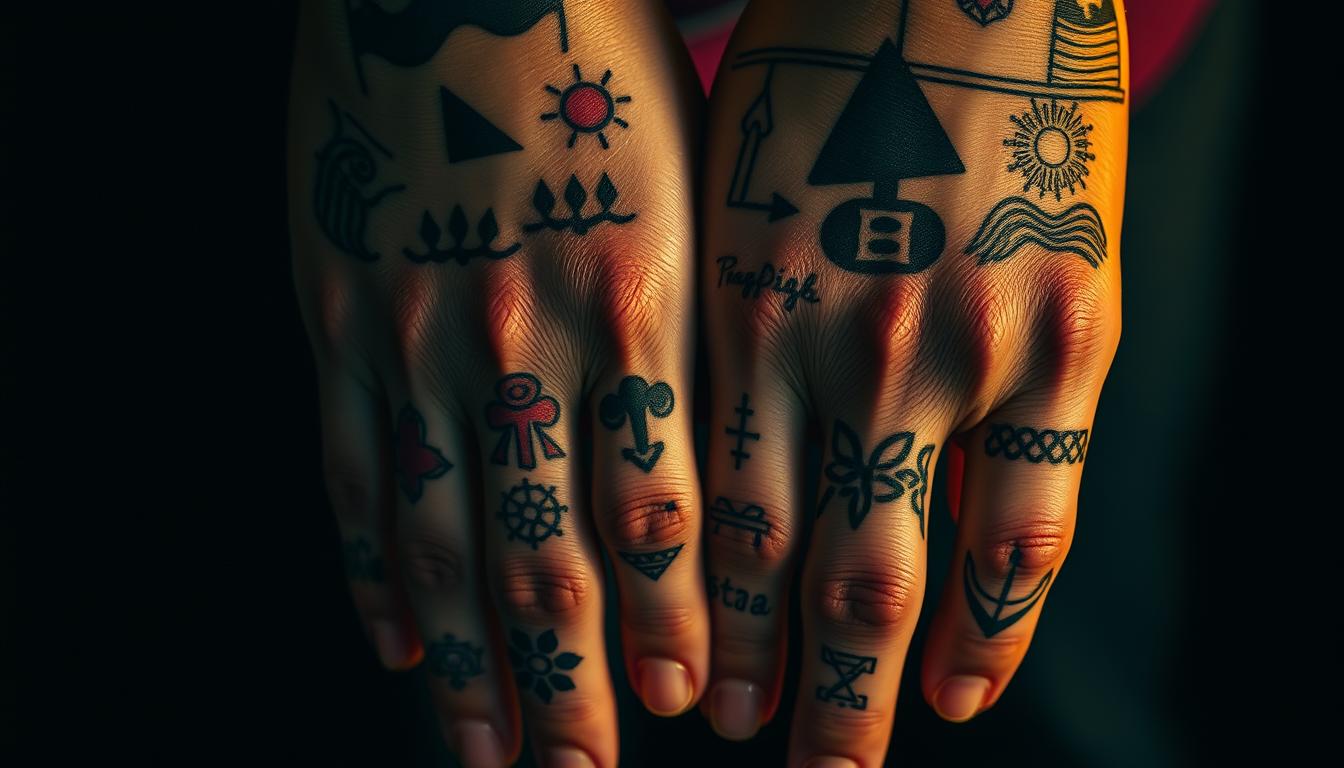
Hand tattoos have become a popular form of self-expression, but many people wonder about their longevity. Unlike tattoos on other parts of the body, hand tattoos face unique challenges that can affect their vibrancy over time.
The skin on our hands is constantly exposed to wear and tear, which can cause the ink to fade faster. But what exactly happens to tattoos on our hands, and how can we maintain their quality?
In this comprehensive guide, we’ll explore the science behind tattoo fading and provide expert insights on what to expect when getting inked on your hands. By understanding the factors that affect tattoo longevity, you can make informed decisions about design, placement, and aftercare to maximize the life of your hand tattoos.
Key Takeaways
- Hand tattoos are more prone to fading due to constant exposure to wear and tear.
- The skin on our hands is different from other parts of the body, affecting tattoo longevity.
- Proper aftercare is crucial to maintaining the vibrancy of hand tattoos.
- Design and placement can impact the longevity of hand tattoos.
- Understanding the science behind tattoo fading can help you make informed decisions.
Understanding Hand Tattoos
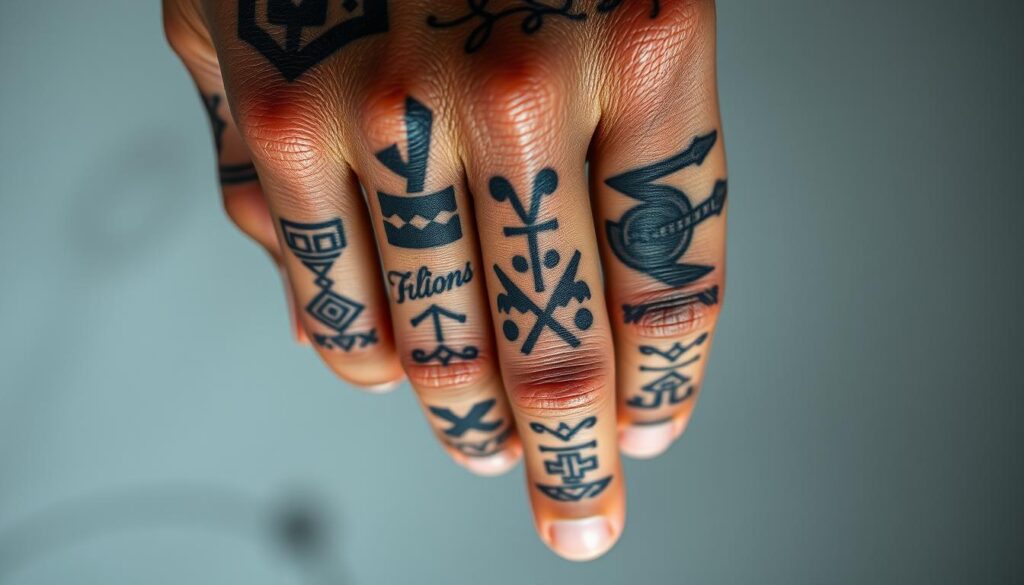
Hand tattoos are not just adornments; they’re statements of personal identity. For those considering getting inked on their hands, it’s essential to understand the unique aspects of hand tattoos.
Why Hand Tattoos Are Popular
Hand tattoos have surged in popularity due to their high visibility and statement-making nature. They serve as constant personal expressions that can’t be easily hidden. Unlike tattoos on other body parts, hand tattoos immediately draw attention and often become conversation starters, making them appealing for those wanting to showcase their individuality.
The Unique Nature of Hand Skin
The skin on hands differs significantly from other areas of the body – it’s thinner, contains fewer fat cells, and experiences constant movement and exposure. This unique characteristic directly impacts how tattoo ink settles and ages. Understanding these distinctive characteristics of skin is crucial before committing to a hand tattoo, as they directly influence both the tattooing process and long-term appearance. For more information on the healing process of tattoos, you can visit this resource.
Many people choose hand tattoos despite knowing the maintenance challenges because they value the powerful visual impact and personal significance of having art on such a visible part of their body.
Do Hand Tattoos Fade? The Reality
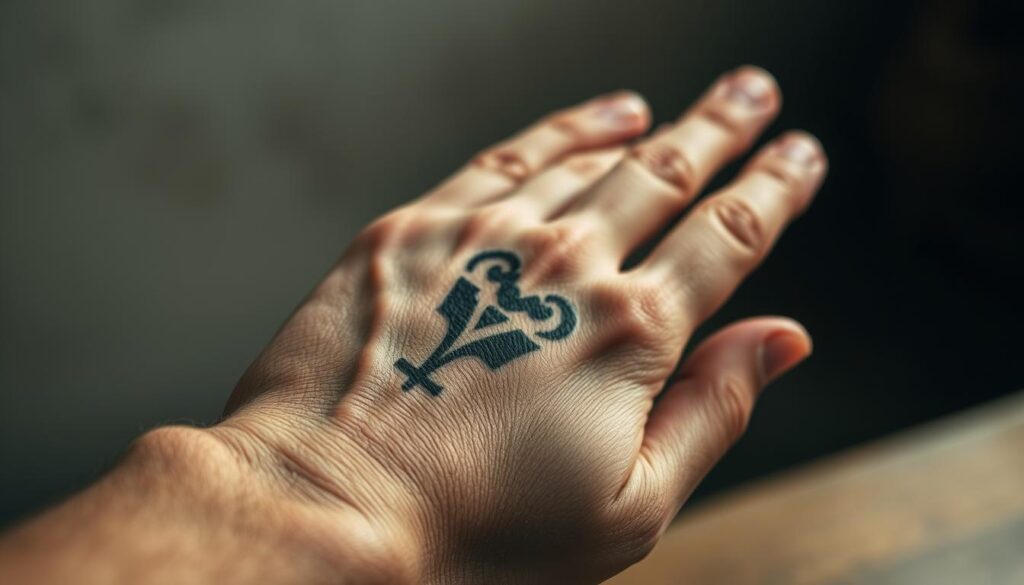
One of the most significant concerns abouthand tattoosis their susceptibility to fading over time. When you get atattoo, the needle depositsinkin a layer ofskinknown as the dermis. Overtime, cells from your immune system – called macrophages – gradually absorb thetattoo inkand disperse it, which can lead to sometattoo fading.
The Science Behind Tattoo Fading
The science behind tattoo fading involves understanding how ink particles interact with your body’s immune system over time. When a tattoo needle deposits ink in the dermis layer of skin, macrophage cells in your immune system gradually begin to absorb and disperse tiny ink particles.
Why Hand Tattoos Fade Faster
Hand tattoos undeniably fade faster than tattoos on most other areas of the human body due to several biological and environmental factors. The constant cell turnover in hand skin accelerates the fading process, as new skin cells replace old ones more rapidly in this high-use area. For more information on the impact of tattoos on the body, you can visit this resource.
Daily activities that might seem harmless – washing hands, exposure to sunlight, friction from work – all contribute to the accelerated fading of hand tattoos. While all tattoos will experience some degree of fading over time, hand tattoos typically show noticeable changes within the first few years.
The Most Vulnerable Areas for Fading

Hand tattoos are particularly susceptible to fading, but some areas fare worse than others. The skin on our hands is subject to constant stress and friction, which affects the longevity of tattoos.
Finger Tattoos vs. Top of Hand
Finger tattoos, especially those on the sides and inner portions, tend to fade faster due to the constant bending and friction. In contrast, tattoos on the top of the hand generally retain their vibrancy longer.
Knuckles and Palm Considerations
Knuckle tattoos face unique challenges as they stretch and compress with every hand movement. Palm tattoos, while visually striking, have the shortest lifespan due to the thick skin and high frequency of use. Understanding these differences can help you strategically place your hand tattoo for maximum longevity.
As Dr. Harold Lancer, a dermatologist, notes, “The skin on your hands is different from other areas of your body, and tattoos here require special care.” By choosing the right placement and caring for your tattoo, you can extend its lifespan.
Choosing the Right Design for Longevity
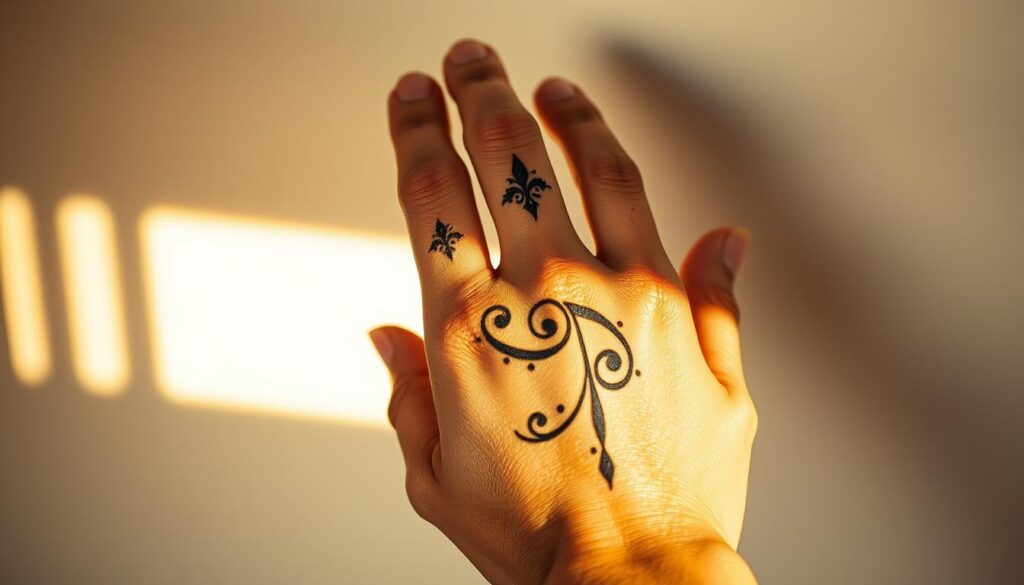
When it comes to hand tattoos, the design you choose plays a crucial role in determining how well it will hold up over time. The nature of hand skin and its constant movement mean that some designs are more suitable than others.
Designs That Hold Up Better
Bold, simple designs with thick lines and minimal detail tend to age more gracefully on hands than intricate, detailed work with thin lines. This is because fine lines and tiny details don’t usually hold up well in areas of the body that flex or move a lot.
Colors and Their Staying Power
Solid black ink typically maintains its appearance longer than colored inks, which can fade and blur more quickly on hand skin. Darker shades like navy, dark green, and deep red generally last longer than lighter colors like yellow, light blue, or pink.
Working With Your Artist on Design Modifications
Consulting with an experienced tattoo artist who specializes in hand tattoos is crucial. They can suggest design modifications that preserve your vision while enhancing longevity. Many artists will recommend slightly larger designs than you might initially want, as shrinking detailed work too small often leads to faster deterioration.
By working collaboratively with your artist, you can create a design that not only looks great but also stands the test of time. Consider designs that work with the natural contours and movement of your hand rather than fighting against them.
Proper Aftercare for Hand Tattoos
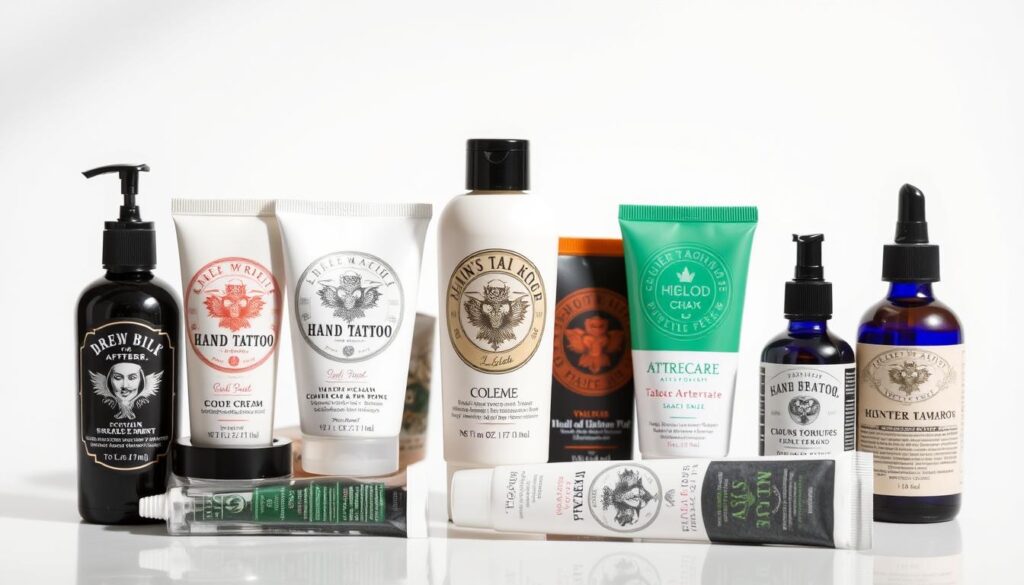
To keep your hand tattoo looking its best, proper aftercare is essential. Hand tattoos are particularly vulnerable due to their location and constant exposure to elements and daily activities.
Initial Healing Process (First 2 Weeks)
During the initial healing process, it’s crucial to keep your tattooed skin clean and protected. Wear latex or polyurethane gloves over your ink after removing the initial dressing, and change them frequently. Wash your hands with an unscented soap like Dr. Bronner’s unscented baby soap ($7).
Apply Aquaphor healing ointment ($10) lightly on your tattoo until it starts peeling, then switch to an unscented moisturizer. Keeping your hands clean and moisturized at all times is vital.
Long-Term Care Strategies
Once your tattoo has healed, implementing a long-term care routine becomes crucial. This includes daily moisturizing and sun protection to maintain the tattoo’s appearance.
Recommended Products for Hand Tattoo Care
Products specifically formulated for tattoo aftercare, such as WOO’s aftercare balm, contain ingredients that help preserve color vibrancy. Avoid wearing rings or jewelry that might rub against new finger tattoos until they’re completely healed.
By following these aftercare tips, you can ensure your hand tattoo remains vibrant and healthy for years to come.
The Cost Factor: Initial Investment and Touch-ups
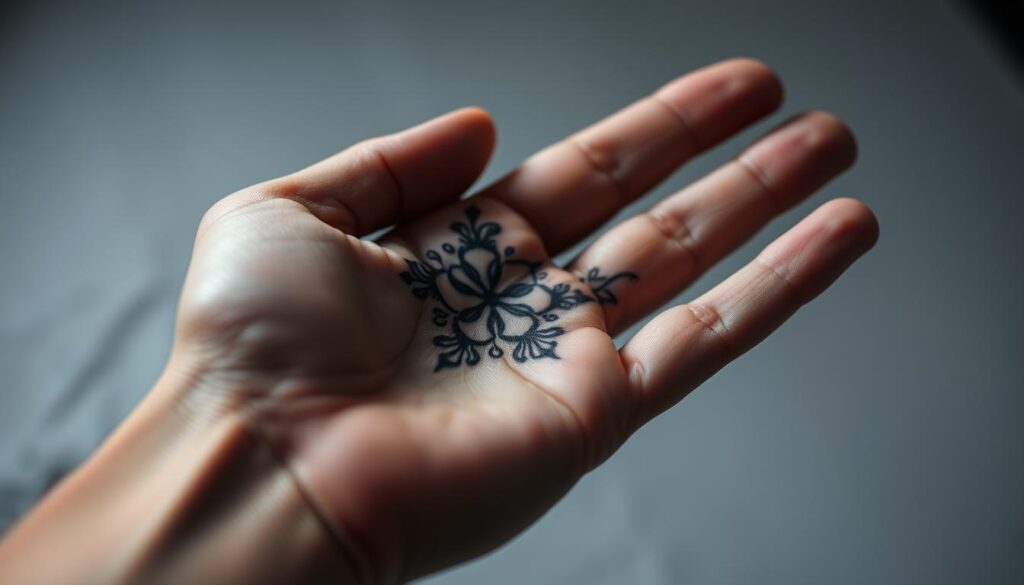
Investing in a hand tattoo requires careful consideration of both initial costs and long-term maintenance expenses. The cost of a hand tattoo can vary significantly based on several factors, including the artist’s hourly rate, the complexity of the design, and the size of the tattoo.
Average Costs and Factors Influencing Price
Hand tattoos typically cost more than similarly sized tattoos on other body parts due to the specialized skill required. In major US cities, the minimum cost for a small hand tattoo can range from $150 to $200, with prices increasing based on size, detail, and the artist’s reputation.
| City | Minimum Cost for Small Hand Tattoo | Average Cost for Medium Hand Tattoo |
|---|---|---|
| New York | $150 | $300-$500 |
| Los Angeles | $150-$200 | $350-$600 |
| Chicago | $120-$180 | $250-$450 |
Budgeting for Touch-ups
It’s essential to budget for touch-ups, as hand tattoos often require more frequent maintenance than tattoos on other areas. Many artists recommend touch-ups every 1-2 years, compared to 5-10 years for less exposed areas.
- Some designs may need multiple touch-up sessions before they fully settle into the skin.
- Many studios offer touch-up packages or reduced rates for returning clients.
By understanding the initial and long-term costs associated with hand tattoos, individuals can make informed decisions about their investment.
Extending the Life of Your Hand Tattoo
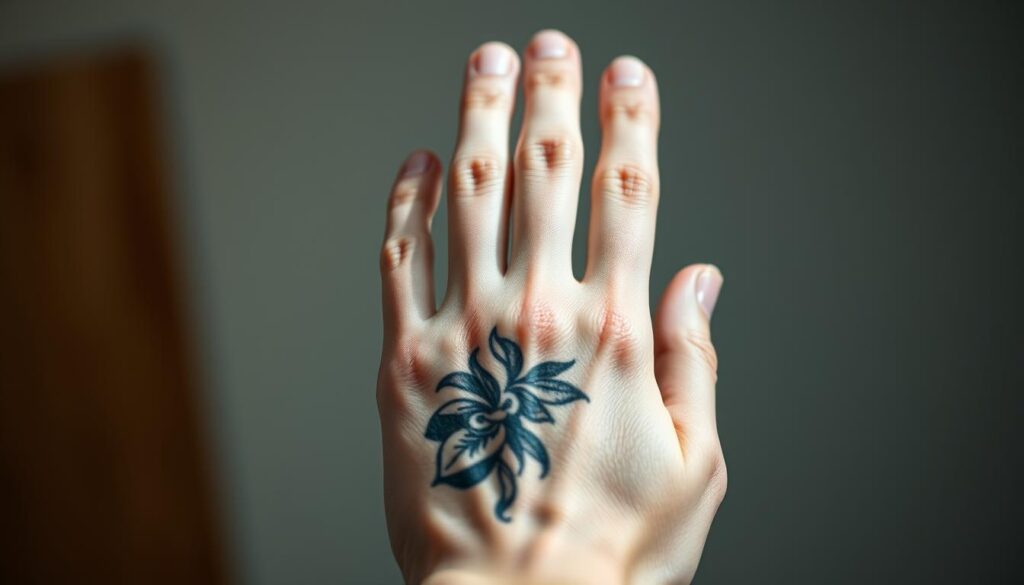
To keep your hand tattoo looking its best, it’s essential to adopt a consistent care routine. This involves a combination of daily protection habits, proper moisturizing, and sun protection.
Daily Protection Habits
Developing daily protection habits is crucial for maintaining your hand tattoo. This includes applying moisturizer to your tattooed skin at least twice a day, especially after washing hands or exposure to water. Investing in a high-quality hand cream that you enjoy using is also important, as you’ll be more likely to apply it regularly.
Moisturizing and Sun Protection
Moisturizing and sun protection go hand in hand when it comes to preserving your hand tattoo. Use a minimum SPF30 sunscreen on your hands whenever they’ll be exposed to sunlight, even on cloudy days. Consider hand creams with built-in SPF for daily use to simplify your protection routine.
| Protection Method | Benefits |
|---|---|
| Moisturizing Cream | Keeps skin hydrated, reducing fading |
| SPF30 Sunscreen | Protects against UV damage, preserving ink |
| Hand Creams with SPF | Moisturizes while protecting from UV rays |
When to Consider Touch-ups
Pay attention to signs that your hand tattoo might need a touch-up, such as significant fading, patchiness, or blurred lines. Catching these early can prevent more extensive work later. For those who really want their hand tattoos to last for years to come, wearing protective gloves during activities like gardening, cleaning, or extended outdoor exposure can make a substantial difference.
By following these guidelines and being proactive about protection, you can significantly extend the life and vibrancy of your hand tattoo.
Conclusion: Are Hand Tattoos Worth It?
Ultimately, the worth of a hand tattoo lies in its personal significance and the confidence it instills in the wearer. When I look at my hand tattoos and have a fresh set of nails on, I feel unstoppable. Hand tattoos are a powerful form of self-expression that you see every day, serving as a constant reminder of what matters to you.
Despite the challenges, many find that hand tattoos are worth it for their visibility and personal significance. To make the most of your tattoo, keep in mind both aesthetic considerations and practical realities, and don’t hesitate to invest in proper care and touch-ups to keep your hand tattoo looking its best.
